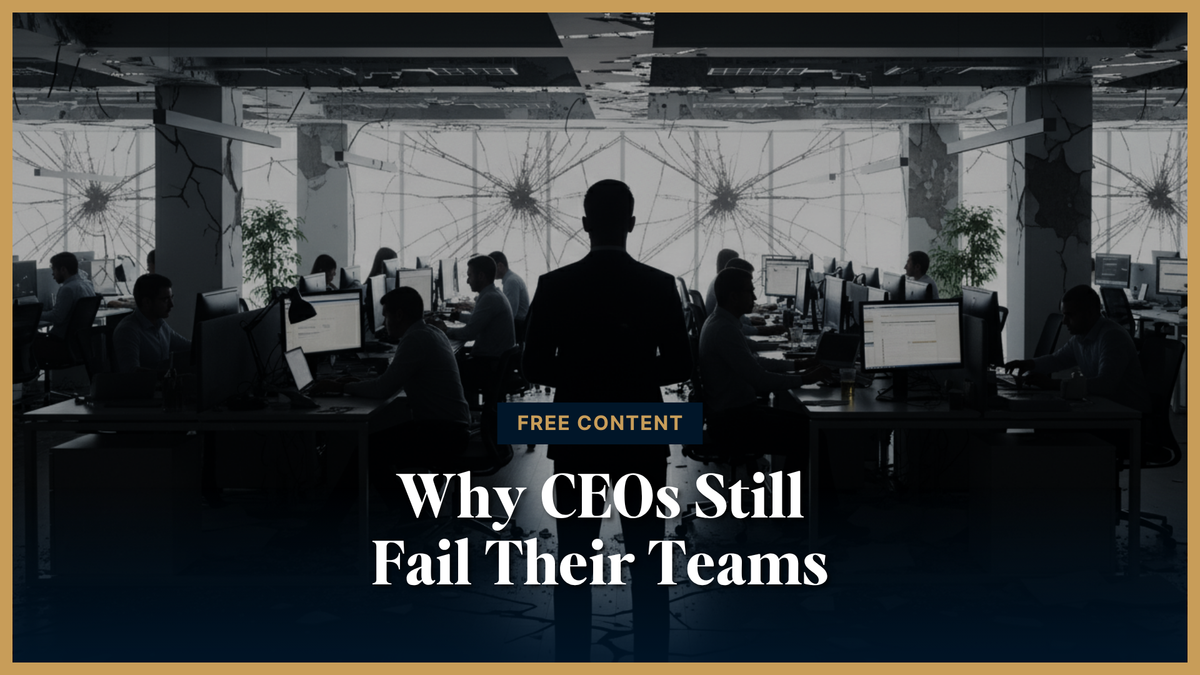Many leaders focus on hiring talented people… then wonder why the results still fall short. The truth is people don’t succeed because they are talented. They succeed because the environment sets them up to win.
High-performing companies are not built on great hires alone.
They’re built on clarity, structure, and systems that eliminate confusion and guide every person toward meaningful execution.
This post breaks down exactly how to create that environment.
This concept was discussed in The Elite League Podcast, where real estate entrepreneur Tim Heyl shared insights on building scalable systems, leadership clarity, and operational structure.
Watch the full conversation to learn the frameworks high-performing teams rely on to win.
Why Leaders Must Build Systems, Not Dependency
Most founders unintentionally create a culture where every answer flows back to them.
It’s not because they want control, it’s because the team was never given all the tools to execute independently.
Teams default to dependency when structure is missing.
Systems remove ambiguity.
Systems absorb stress.
Systems create predictability.
And predictability frees people to perform at their best.
Below are the building blocks of a system that consistently produces high-performing teams.

The Framework: How to Build an Environment Where Your Team Can Win
They Reduce Barriers Between You and Your Network
Step 1: Set Clear Expectations
People fail not because they lack effort but because they don’t know the rules of the game.
Your expectations need to be:
✔ Written
Verbal expectations disappear. Written expectations guide.
✔ Measurable
“We need better communication” is useless.
“We reply to clients within one hour” is measurable.
✔ Connected to outcomes
Every expectation should link back to the results you want.
Example:
Instead of:
“We need better follow-up.”
Use:
“Each lead gets contacted 8 times in the first 72 hours.”

Step 2: Implement Weekly Accountability Structures
High performers thrive with consistent rhythms.
Weekly accountability meetings ensure progress doesn’t drift.
Use a simple structure:
- What were last week’s commitments?
- What was completed?
- What wasn’t? Why?
- What are the top three commitments for this week?
This rhythm creates consistency, removes excuses, and reinforces priorities.
Real company example:
A SaaS leadership team reduced missed deadlines by 48% after implementing a 30-minute Monday check-in focused strictly on commitments and blockers.
Step 3: Define Every Role Clearly
People cannot win in roles that change daily.
A clear role description should include:
✔ Mission of the role
Why does this job exist?
✔ Core responsibilities
What must be done every week?
✔ Key metrics
How is success measured?
✔ Decision-making boundaries
What they own vs. what requires approval.
Why this matters:
When roles are muddy, accountability dies.
When roles are defined, leadership emerges.

Step 4: Document Processes So Anyone Can Execute Them
Many entrepreneurs keep processes in their head.
This makes scaling impossible.
Create SOPs (Standard Operating Procedures) for the tasks that drive the business:
- Lead management
- Onboarding
- Sales scripts
- Client communication
- Daily operational tasks
Your test is simple:
If someone left tomorrow, could a new person execute their tasks within 48 hours using your documentation?
If not, your systems aren’t strong enough yet.
Step 5: Give Feedback That Is Real, Specific, and Frequent
Most leaders struggle with feedback because they don’t want conflict.
But avoiding feedback creates a silent culture of confusion.
Use the “Clear, Calm, Direct” model:
- State the observation.
- Describe the impact.
- Clarify the expectation.
- Confirm understanding.
Example:
Instead of:
“Your reports are sloppy.”
Say:
“Yesterday’s client report had three missing sections, which slowed our delivery. Our standard is full completion before handoff. Are we aligned moving forward?”
This creates alignment without emotion or tension.

How This Framework Changes Companies
Once you create structure, something powerful happens:
People take ownership.
They stop waiting on you.
Problems get solved before they reach you.
Because expectations and processes make decisions predictable.
Leaders rise from within your team.
Not because you told them to, but because the environment supports leadership.
Culture strengthens naturally.
Clarity and accountability make culture consistent.
You stop being the bottleneck.
And your business becomes scalable.

Action Steps You Can Implement This Week
1. Write clear expectations for every role.
Start with your top three most important positions.
2. Launch a weekly accountability meeting that lasts no more than 30 minutes.
Structure beats length.
3. Choose one key process and document it fully.
Don’t document everything.
Start with the one that creates the most friction.
4. Deliver one piece of direct feedback this week.
The longer you wait, the harder it becomes.
5. Audit your team environment.
Ask yourself:
“Would a talented person thrive here… or struggle?”
BOTTOM LINE
If you build an environment that sets people up to win, you will build a company that can finally grow without depending on you to carry it.
Systems are not rules.
Systems are freedom.
👉 Want more strategies like this? Subscribe to Elite League Mastermind, where we break down lessons from The Elite League Podcast and show you how to apply them directly to your business.









Member discussion